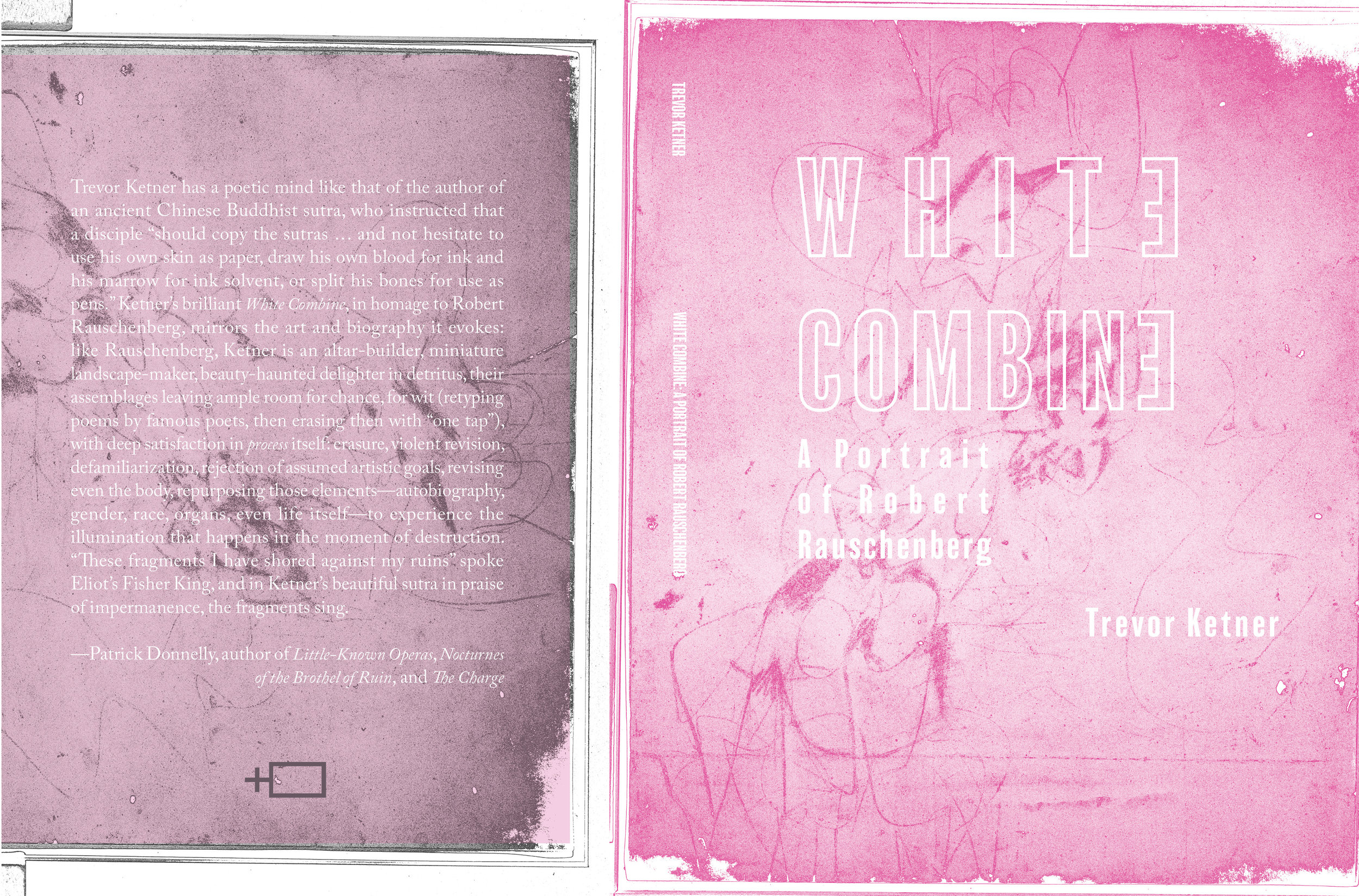White Combine: A Portrait of Robert Rauschenberg, by Trevor Ketner


White Combine: A Portrait of Robert Rauschenberg, by Trevor Ketner
It’s amazing
how grotesque the workings are that keep
things going , how swollen with blood.
You have to erase heart,
lungs, spleen, and liver,
the glut of intestine, the bladder,
to make use of what’s left. Sure, something ends
for you — some of the dogs
are still barking — but this body
can do more than keep itself going.
An “undrawing,” according to Trevor Ketner, is, to put it simply, “a drawing that’s been erased.” Not so simply, an undrawing represents the kind of erasure with which poets are more and more familiar; that is, the mechanisms that were once familiar, that had at one time offered promise, have failed before their prophecies. In the face of late capitalism and our estrangement from reality, we look to what is no longer present. Robert Rauschenberg is a perfect representation of that which was and is no longer, both in design and lifestyle, and corporeal state. Through a long poem, Ketner curates a landscape that is part [auto]biography and part political synthesis. They see that “what we have can be more ______ / once we’ve torn it down.” The blanks and brackets of what once was have explicitly undergone a rupture in Ketner’s chapbook, White Combine. Here is an examination on queer bodies, Rauschenberg traveling towards, through, and away from infamous lovers in pursuit of art and selfhood, eventually finding himself in “the January water / of a lake nearby / called Eden.” It is meanwhile an exploration into disappeared peoples, the queer and brown and immigrant bodies of those undermined and killed in the long-durational experiment of America.
On White Combine, Patrick Donnelly, author of Little-Known Operas, Nocturnes of the Brothel of Ruin, and The Charge writes the following:
Trevor Ketner has a poetic mind like that of the author of an ancient Chinese Buddhist sutra, who instructed that a disciple “should copy the sutras … and not hesitate to use his own skin as paper, draw his own blood for ink and his marrow for ink solvent, or split his bones for use as pens.” Ketner’s brilliant White Combine, in homage to Robert Rauschenberg, mirrors the art and biography it evokes: like Rauschenberg, Ketner is an altar-builder, miniature landscape-maker, beauty-haunted delighter in detritus, their assemblages leaving ample room for chance, for wit (retyping poems by famous poets, then erasing then with “one tap”), with deep satisfaction in process itself: erasure, violent revision, defamiliarization, rejection of assumed artistic goals, revising even the body, repurposing those elements—autobiography, gender, race, organs, even life itself—to experience the illumination that happens in the moment of destruction. “These fragments I have shored against my ruins” spoke Eliot’s Fisher King, and in Ketner’s beautiful sutra in praise of impermanence, the fragments sing.
Purchase your preorder of Trevor Ketner’s White Combine, and receive $3 off your order. 2019 Subscribers automatically receive all discounts on preorders, plus free shipping, so do yourself a favor and subscribe to receive Ketner’s chapbook, as well as Ellena Savage’s Yellow City, Joey De Jesus’s Noct–The Threshold of Madness, and Rae Gouirand’s The History of Art, as well as forthcoming productions by Shannon Sankey, Olatunde Osinaike, and Kina Viola.
Please note that Trevor Ketner’s chapbook will not ship until the end of August/early September.
A note about the artwork. With permission from SFMoMA and the Robert Rauschenberg Foundation, we are pleased to be able to use SFMoMA’s infrared scan of the Robert Rauschenberg piece, Erased de Kooning, 1953.
Robert Rauschenberg
Erased de Kooning Drawing, 1953
Traces of drawing media on paper with label hand-lettered in ink, and gilded frame
25 1/4 x 21 3/4 x 1/2 inches (64.1 x 55.2 x 1.3 cm)
San Francisco Museum of Modern Art
Purchase through a gift of Phyllis C. Wattis
©Robert Rauschenberg Foundation
RRF Registration# 53.D001
We are grateful to the SFMoMA and Robert Rauschenberg Foundation for use of this image, copies of which will be sent to both institutions for archive purposes.
